Blade Runner (1982) Review
To celebrate the upcoming release of Blade Runner 2049, we take a look back on Ridley Scott’s original sci-fi classic. Blade Runner 2049 will be hitting theatres the 6th October, directed by the always brilliant Denis Villeneuve and starring Ryan Gosling, Jared Leto and Harrison Ford.
Released : September 9th 1982
Certificate : 15
Director : Ridley Scott
Cast : Harrison Ford, Sean Young, Rutger Hauer, Edward James Olmos, Daryl Hannah, William Sanderson, Joe Turkel
Plot : Set on 2019 earth, robots with near human level of intelligence, called Replicants are used as a work force. When four of the most advanced models escape their work compound a Blade Runner, or Replicant Hunter, is sent to hunt them down.
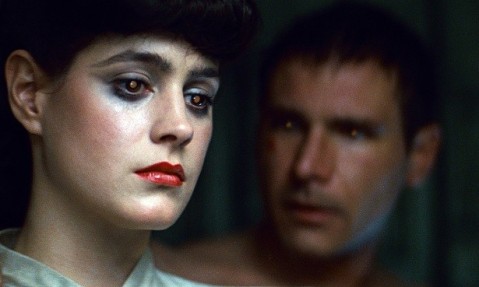 Released just three years after Ridley Scott had cemented himself in the sci-fi genre with Alien in 1979, he returned to the genre for a much more thought provoking tale. While Alien showed how he could masterfully create new worlds with an authentic feel, in Blade Runner he showed how these sci-fi worlds had the capability of deeper meaning and reflection. Not only does the story of Blade Runner bring about deep questions, but literally the architecture of the world Scott create adds to and develops the themes. That’s one of the striking elements of Blade Runner, how the base storyline is a simple as Alien, but the setting, imagery, dialogue and sound all take this plot and help develop it into something more profound.
Released just three years after Ridley Scott had cemented himself in the sci-fi genre with Alien in 1979, he returned to the genre for a much more thought provoking tale. While Alien showed how he could masterfully create new worlds with an authentic feel, in Blade Runner he showed how these sci-fi worlds had the capability of deeper meaning and reflection. Not only does the story of Blade Runner bring about deep questions, but literally the architecture of the world Scott create adds to and develops the themes. That’s one of the striking elements of Blade Runner, how the base storyline is a simple as Alien, but the setting, imagery, dialogue and sound all take this plot and help develop it into something more profound.
To refer to the simply nature of the plot, everything is laid out at the start in text form. Man creates intelligent life as a workforce, some rebelled, humans crush the rebels and ban these life forms from earth. Here the film opens up so many themes such as identity, morality, slavery, colonialism and social structure. Scott then creates a world which reflects these themes. It has been widely discussed how the social structural themes of the Replicants slavery in mirrored by the architecture of the city. The buildings that house the wealthy creators of the Replicants clearly look like a temples fit for a king. The inhabitants of this upper class society are white males and the interiors are all polished and neat, while the city life below it is multi-cultural, gritty and chaotic. A clear commentary on racial and social structure issues. The film is full of imagery such as this. A return to this series is so exciting as it promises a re-emergence of profound imagery that has been missing in the sci-fi genre recently. Denis Villeneuve has brilliantly attempted to bring back this importance of imagery to the genre with Arrival.
Which leads onto other aspects of Blade Runner. In Arrival while the imagery is sprawling and profound, Villeneuve always focuses on the human emotive aspects of the story. For Arrival that is the struggle of motherhood. Blade Runner also never fails to remain focused on the characters and their struggle, despite all of its morality and creationism themes. Blade Runner is a film that uses its simple narrative not only for deeper themes but aptly fleshes out the characters involved. Each main player in the film struggles with their identity, for example we see Harrison Ford’s Deckard identity as a Blade Runner fall apart as he questions the morality of his job. Scott is able to deal with the grand themes and the small personal struggles of the character seamlessly and in an even-handed way. It is the amalgamation of these large ideas and small character struggle which make Blade Runner amazing, and then there is the music.
The score of the film was created by legendary film composer Vangelis, whose work is too great to list. Probably most famous for his Oscar winning score for Chariots of Fire. The score for Blade Runner was created entirely in post-production as Vangelis created the sounds via initial viewing of each image and scene of the film. This layered a second vision onto the film, after Scott had finished, Vangelis applied his own interpretation via the music. The results is stunning and the music is an integral part of the experience. Throughout the film a distant dreamlike sound is created, in which distant echoes and drawn out notes are repeated. This distant the sounds create can be interpreted in many ways, firstly as a dream, or perhaps connoting how despite the futuristic setting many of the themes and issues are familiar to us. As well as this it acts to also reflect the characters emotions with great humanity. Just as Scott did, Vangelis was able to deal with the big themes and the characters equally.
Blade Runner works on so many levels. Visually stunning, rich with character drama and brewing with deeper themes and ideas. It’ll be a joy to return to this world next month, thirty five years after the original was released. The ability to juggle the big themes as well as the characters is something that Denis Villeneuve has proven he can do time and again, and his recent work in Arrival shows he’s more than capable in the sci-fi genre. Other reasons to be excited that the sequel will be treated with respect is the addition of Ryan Gosling and Jared Leto, as well as cinematographer legend Roger Deakins (The Shawshank Redemption, No Country for Old Men), and some of Villeneuve past co-workers such as editor Joe Walker (12 Years a Slave, Arrival) and composer Jóhann Jóhannsson (Sicario, The Theory of Everything).
Verdict : A film worthy of the title of sci-fi classic. A film which visual beauty is matched by its richness of story and imagery.
Verdict : 5/5
Quote : “All those moments will be lost, like tears, in rain.”
Manchester by the Sea Review
Another Great Boston Film
Released : January 13th 2017
Certificate : 15
Director : Kenneth Lonergan
Cast : Casey Affleck, Michelle Williams, Kyle Chandler, Lucas Hedges
Plot : Lee Chandler (Affleck), a handy man working in Manchester, has his life turned upside down by the death of his brother (Chandler).
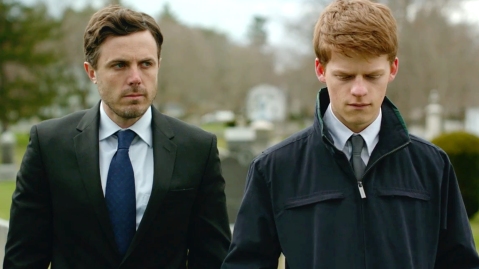 Kenneth Lonergan returns as writer director of one of this year’s Best Picture hopefuls, Manchester by the Sea. Lonergan has proved himself in the Academy’s eyes before, receiving nominations for his screenplays for the little know You Can Count on Me, and the famous Scorsese period gangster film, Gangs of New York. The film stars relative new comer Lucas Hedges has had very smaller roles till now, supporting in films such as The Zero Theorem and Moonrise Kingdom. However has proved to be one of the biggest surprises of the awards season.
Kenneth Lonergan returns as writer director of one of this year’s Best Picture hopefuls, Manchester by the Sea. Lonergan has proved himself in the Academy’s eyes before, receiving nominations for his screenplays for the little know You Can Count on Me, and the famous Scorsese period gangster film, Gangs of New York. The film stars relative new comer Lucas Hedges has had very smaller roles till now, supporting in films such as The Zero Theorem and Moonrise Kingdom. However has proved to be one of the biggest surprises of the awards season.
The story is a pure character drama, with characters which are both relatable and original enough to be engaging. The character, as with many Boston set dramas, may not win the audience over immediately, but ultimately become very memorable cinematic characters. The story arc is masterfully told, allowing for backstory to be tastefully spoon fed into the present events and the creation of several beautiful character arcs. The film is lengthy, and the topic matter sombre and dry in parts, but the script and dialogue so well crafted, that the film is a rare drama that feels authentic and is engaging. The story has such an emotional spectrum, which is executed brilliantly. Amazing humour is sprinkled into the film throughout as a fitting way to keep the film grounded and enjoyable.
To address Lonergan contribution, in this award climate it wouldn’t be surprising if his directing efforts went unrewarded. With the likes of Villeneuve, Gibson and Chazelle dealing with larger than life stories and presenting with such flare and spectacle, the subtle work of Lonergan may be forgotten directorally. But this is a shame as the warmth and heartbreak that Lonergan is able to convey, and perfectly capture character drama, is a gem. If it isn’t cliché to say, from the opening shot, the films presentation has passion and calculation. Lonergan skills as a screenwriter are amazing, building characters and their exchanges which are some of the most engaging and life like this year. Hence making the Screenplay Oscars a coin flip between this and Hell or High Water. Not just the main characters but all supporting casts lines, contribute to the story and represent genuine human traits. Not a throwaway line exists within this film, making it a drama that could be enjoyed for hours.
And to round off the growing merits of the film, the performances are stunning. Casey performance for some, as with the majority of his work, may be viewed as underplayed. But the effect made the character much more lifelike, Lee’s emotions aren’t overplayed, or exaggerated to make the drama more engaging. Instead, much alike the script, the acting is subtle which makes for a more authentic cinematic experience. Lucas Hedges role as well is stunning honest in his acting, bringing to life a tricky character who initially may seem shallow, but develops. Michelle Williams is able to bring so much to the film is so few scenes, absent for probably eighty percent of the film, she is still memorable walking out of the theatre.
Manchester by the Sea is an amazing feat of character drama. Each viewpoint and emotion that is delivered by the script and the acting is understandable and emphatic on some level. It is a film with a subtle current, which ultimately pulls you in. While the story line may be one of the saddest of the award season, this is balanced by the amazing sense of humanity and warmth that the actors and script bring to the film.
Verdict : A few with few flaws. It takes the theme of grief and is able to actualize it with such precision and skill. Plus a heartfelt ending, great humour and amazing performances.
Verdict : 5/5
Quote : “I can’t beat it. I can’t beat it. I’m sorry.”
Split Review (Spoiler Free)
We Need To Talk About Kevin
Released : January 20th 2017
Certificate : 15
Director : M. Night Shyamalan
Cast : Anya Taylor-Joy, James McAvoy, Haley Lu Richardson
Plot : Three girls are abducted after a birthday party. They soon realise that their abductor (McAvoy) suffers from split personality disorder.
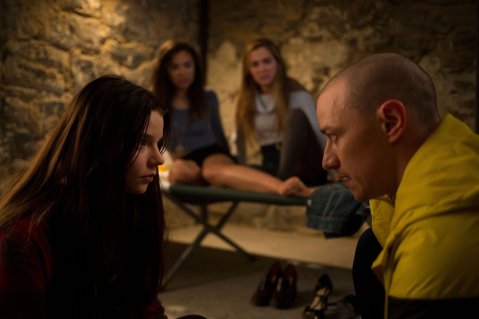
Night Shyamalan, undoubtedly, returns to top form in his new film Split. After four mainstream films, that were poorly received by fans and critics, and other films that aren’t widely known, Shyamalan was considered written off by many. With Split, a film he self-funded as to retain as much creative control as possible, he recruited some brilliant rising horror craftsmen. The cinematographer for the film, Mike Gioulakis, who Shyamalan reportedly wanted to work with instantly after seeing Gioulakis work on It Follows. As well the lead of the film is played by Anya Taylor-Joy, an actress who burst onto the scene with a compelling performance in what is considered 2016 best horror film, The Witch.
Split’s premise alone is an engaging story, with such a quirky psychological concept, it’s a rarity of film making. The premise of the film would make anyone sceptical, unless you have Shyamalan and McAvoy attached to the project. And you can tell from the opening scene that there has been much care taken with the films craft. Firstly, the girls in distress, due to Taylor-Joy character, don’t fit a conventional horror film mould (a side note; it is debatable whether to classify this film as a horror). These characters are smart, and don’t just despair that the situation and have an intriguing dynamic, which was refreshing for the horror genre. Taylor-Joy character is given a backstory that is brilliantly told and bleeds into the rest of the film. The quality of her character and her performance is good enough to match McAvoy going all out in a character with 23 sides. The script deals with McAvoy’s character very well, knowing that humour is required to keep him grounded, and McAvoy’s comedic talent shines in this film.
Of course, being a story told by Shyamalan, there’s a high level of attention that audience will pay to each shot, taking in every detail. Studying the film so much for clues about the narrative, may lead audiences away from the fact, that this is a brilliantly directed film. The shot selection and camera movement screams enigma, keeping you engaged without. It’s not just the storyline that keeps you edgy throughout, Shyamalan has clearly thought through every shot very well, and it’s a joy to see such precise and passionate filmmaking. It is for this reason and the performances, that makes Split so great, because as many other critics have said, the brilliance to this film isn’t confined within the ending.
To talk more on the performances, McAvoy’s role in this film is likely an actor’s dream, and it is one of his best roles yet. A lot rides on his performance, and due to an excellent script by Shyamalan, there character couldn’t have been better realised. There are scenes that in a ‘split’ second, the character change swing from humorous and playful, to eerily sinister. And throughout he remains hugely entertaining. Taylor-Joy’s role in the film, demands slightly less of her than The Witch did, but she’s an actress with a great ability to speak volumes without any dialogue, and really shines as another compelling ‘horror’ character.
Split is a hugely pleasing film, it’s such a joy to see a filmmaker regain their spark after becoming an definitive name of the turn of the millennial. Here he displays just as much skill with script writing as with directing. A script, which has dialogue that both develops character and story excellently and contains an overall narrative that is unpredictable and rich. Directing that is so well crafted, creating sickeningly thrilling set piece of action and drama, and an ability to maintain tension throughout, despite a limited set.
Verdict : Shyamalan is back. Split is hilarious, deliciously dark, unpredictable, poignant and rewatchable. A jaw dropping experience.
Verdict : 5/5
Quote : N/A (As to reveal nothing.)
Review: Grandma
Year: 2015
Certificate: 15
Director: Paul Weitz
Screenwriter: Paul Weitz
Cast: Lily Tomlin, Julia Garner, Judy Greer, Marcia Gay Harden, Laverne Cox, Sam Elliott
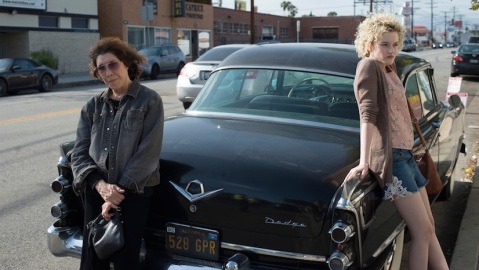
A welcome return to the big screen for Lily Tomlin, Grandma is a beautifully balanced comedic drama in which Tomlin’s retired (and broke) poet Elle sets out on a quest to call in enough favours to raise the money necessary to procure an abortion for her teenage granddaughter, Sage (Judy Greer). Their progress is hampered by the havoc (past and present) wreaked by Elle’s flashbulb temper, and the skeletons in Elle’s closet which begin to rattle as, becoming increasingly desperate, she turns to more and more tenuous connections for help.
Despite the simple premise, Weitz’s film is a work of surprising delicacy, bringing together its seemingly disparate strands of pathos, frank wit and almost knockabout comedy in a way that never feels mishandled. Garner’s sage is a perfect comic foil for the mercurial Elle, providing the audience with a perspective through which to view Elle’s antics with affection as well as incredulity. Garner’s performance is note-perfect, with the spot-on comic timing of her facial expressions providing a counterpoint to Elle’s bursts of temper. In fact, Grandma is consistently funny throughout, with moments of absurdity both underscoring the verisimilitude of the drama (one of the best sight gags I’ve ever seen involving a toy truck occurs in the midst of a bitter reunion between Elle and an ex-lover) and providing a light counterpoint to the film’s more serious elements.
As displayed in his earlier work (most notably 2002’s About a Boy and 2013’s Admission), Weitz has a keen eye for interpersonal relationships, and one of Grandma’s triumphs is its exploration of the complicated web of familial and social connections surrounding Elle. While barely discussed directly, it becomes clear that the death of Elle’s partner of 38 years, Violet, weighs heavily on her, and this loss has fractured the already strained relationship between Elle and her daughter Judy (Marcia Gay Harden). It also causes her to pull back from a fledgling love affair with a younger woman, Olivia (Judy Greer), and the break-up which forms the first scene of the film has lasting consequences.
It is an absolute pleasure (and a rare one) to watch a film which affords such dignity and grants such complexity to an older, female protagonist. Elle is allowed to be by turns relatable and alien, warm and abrasive, and the subtle character development that occurs as she is forced to confront the trail of destruction that her acerbic temperament has wrought is utterly compelling. In fact, despite its wide supporting cast (including accomplished turns from Laverne Cox and Sam Elliott) and lean running time, all of the characters in Grandma feel like real people whose lives continue outside of the frame. Tobias Datum’s unobtrusive and naturalistic camerawork adds to this, placing the audience as almost fly-on-the-wall observers of the unfolding social drama.
Verdict: 5/5
Image credit: sonyclassics.com
The Revenant Review
The Good, The Bear and The Ugly
Released : January 15th 2016
Certificate : 15
Director : Alejandro González Iñárritu
Cast : Leonardo Dicaprio, Tom Hardy, Will Poulter, Domhnall Gleeson, Paul Anderson, Forrest Goodluck
Plot : A hunting party, guided by Hugh Glass (Dicaprio) and his son (Goodluck), are met with hostility by the indigenous tribe. Whilst running for their lives the party is slowed down by the severe injury’s of Glass after a bear attack. This strikes debate amongst the party as the native tribe slowly catches up.
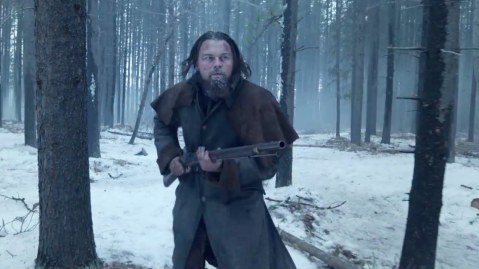 As the BAFTA’s loom, British audience get a chance to pass judgement on Alejandro González Iñárritu new western, and with all the nomination indicating that this film will be giving him the best director Oscar for two years in a row. When films are formulaically released at such a time as January award season in an attempt for the films to be fresh in the minds of the academy in order to better chances of getting to votes, it does mean that British cinema goers get a late verdict. Meaning as the Golden Globes take place and the nominations pour in, the British cinema fanatic will know who much every critic and academy members like the film before viewing. As such a majority of British viewer will see The Revenant with the knowledge that it has gain several awards as well as 12 Oscar nominations, a factor that will undoubtedly be in the minds of every viewer and can have one of two effects. The average man expects to see the best film ever and is disappointed leading to great distaste for film, or peoples pleasure is matched by their hype claiming it a new favourite. Either way the result is an extreme.
As the BAFTA’s loom, British audience get a chance to pass judgement on Alejandro González Iñárritu new western, and with all the nomination indicating that this film will be giving him the best director Oscar for two years in a row. When films are formulaically released at such a time as January award season in an attempt for the films to be fresh in the minds of the academy in order to better chances of getting to votes, it does mean that British cinema goers get a late verdict. Meaning as the Golden Globes take place and the nominations pour in, the British cinema fanatic will know who much every critic and academy members like the film before viewing. As such a majority of British viewer will see The Revenant with the knowledge that it has gain several awards as well as 12 Oscar nominations, a factor that will undoubtedly be in the minds of every viewer and can have one of two effects. The average man expects to see the best film ever and is disappointed leading to great distaste for film, or peoples pleasure is matched by their hype claiming it a new favourite. Either way the result is an extreme.
Straight off the bat The Revenant isn’t a film with a base story line that is revolutionary of the genre, it’s a simple revenge film, which has gained its praise via its execution. The films structure outside of execution and construction isn’t anything to write home about, neither are the characters that complex or individual. Tom Hardy’s Oscar nominated role for example is a true bad to the bone baddie. He possess very little aspects that we will related to due to his total distasteful nature and evil plotting, the same truth apply for the most part for the other character and story dynamic. But for this reason it means that when a story such as The Revenant is handled by such experienced and naturally talented people, it means these simple blocks can be placed together perfectly to create a masterpiece. This doesn’t imply that anyone can make a great film out of basic characters and story premises, but what it does mean is that people of such a high caliber have an ability to really excel, resulting in surprising twists to the genre and great execution such as profound emotional impact in scenes as well as the unique brilliant cinematography.
Without a doubt the runaway selling point of the film is the direction from Alejandro Iñárritu, who surprisingly had never filmed a horse before in his career until The Revenant, and yet he was able to build scenes of stunning nature an arsenal of components. Dealing with bear attacks, large scale battles, horse cashes, show downs, character drama (something he had already perfected in Birdman) all while capturing and dealing with the sprawling Canadian landscape. Each scene of the film is captured in such a unique visually ‘tasteful’ way that every sequence feels authentic and beautiful, overcoming the challenge of pacing that many two and a half film. But it is clear to see that the films long nature and wholly artistic approach to filming means that it won’t please the widest of audiences, if people are contempt with long scenes absent of dialogue and entertainment that is purely directorial, than there isn’t an issue. But every audience member won’t be able to deny the absolute visual ‘joy’ of some of the shots. To pick an obvious example, the bear attack in this, which is teased within the trailer, is like the Saving Private Ryan beach landing scene of animal attacks in films. In short breathtaking.
To address the acting side of the film, there will be much attention directed towards Dicaprio due to the hype at the idea of him finally winning an Oscar, but there needs to be hats taken off to some of the supporting cast. Will Poulter and Domhnall Gleeson turned out brilliant supportive roles, Poulter as the young lad of the hunting party well out of his depth morally and physically and Glesson as the rather weak captain attempting to keep his crew in line and focused. Both of there best scenes being the one revolving around just them, the fact that it was noticeable alongside Hardy and Dicaprio can stand as a testament to their growing skill. If there was an Oscar for best newcomer/best overall year for an actor, Glesson would be a main contender for it. Tom Hardy has as well gone from strength to strength since 2011 to become one of the definitive actors of this decade, typified with his role in The Revenant as a bad guy that isn’t his more interesting character, but delivered with such believable nature, conviction and ease it is well deserving of the Oscar nomination it has received.
And the frosting on this cake is of course the main man Dicaprio, as he turns out his third Oscar worthy role of the decade (with Mr Candie deserving an nomination as much as Waltz deserved to win). Probably not the role he will be remembered for due to the films lack of ‘fun’ in comparison to others, but due to the skill that is demanded of the role it’s his biggest piece of Oscar bait ever. This being due to the roles duties such as conveying emotion while seeming on the edge of death, telling a story with just facial expression (due to lack of dialogue) and its always a bonus to throw in a foreign language for good measure (as speaking native American to his son). As well as these star performances it would be a crime not to mention the work of Emmanuel Lubezki as cinematographer, who is in serious danger of winning his third academy award with this film, if it wasn’t impressive enough that he this year is his 8th Oscar nomination within his career.
Verdict : The Revenant offers perfection in fields of acting, cinematography and especially directing. Some might find it too focused on its artistic nature, or find little metaphorical meaning behind Iñárritu shot chooses, but its all done for the sake of beauty. As MGM production say in their slogan, “Ars Gratia Artis”, meaning “Art for Arts Sake”.
Verdict : 5/5
Quote : “If you look at its branches, you swear it will fall. But if you watch the trunk, you will see its stability.”
Review: Carol
Year: 2015
Certificate: 15
Director: Todd Haynes
Screenwriter: Phyllis Nagy
Cast: Cate Blanchett, Rooney Mara, Sarah Paulson, Kyle Chandler, Jake Lacy
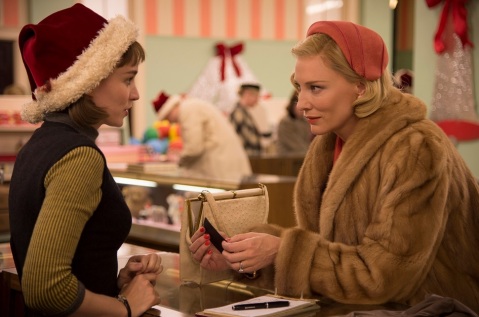
In 1950s New York a chance meeting between wealthy socialite Carol Aird and young department store clerk Therese Belivet quickly leads to a tentative romance. However, they must weather both the homophobic moral code of the era and the threats of Carol’s jealous ex-husband Harge if their relationship is ever to blossom.
Although at the surface langorous and dreamlike, Todd Haynes film still manages to offer a sharp commentary on the nature of attraction, love and jealousy and the rules by which lovers are bound. Carol and Therese’s courtship is one of bland conversation contrasted with questing, significant glances, neither woman being able to say (at first) exactly what they mean as it is not only socially forbidden but, one senses, emotionally too raw. Carol’s apparently offhand request for Therese to come and visit her betrays her longing and her loneliness as they sip soup in a dingy but opulent restaurant, while then tension hums between them.
Blanchett and Mara’s irresistible performances are at the centre of the film, and both actors are skilled enough to interpret the subtleties of Phyllis Nagy’s screenplay. By nature some of Carol and Therese’s conversation is opaque, but the leads, and Todd Hayne’s elegant direction, mean the audience understands exactly as much as they are intended to. Blanchett is fantastic as Carol, a woman torn between providing a social performance in order to hold on to her lifestyle and- more crucially- custody of her daughter and giving in to a new and powerful romance. In their initial meetings, the wonder and curiosity with which she gazes at Therese is tinted with something not unlike fear, even as she confidently invites Therese to her home. Mara brings the same intelligence and intensity as she did in Fincher’s Girl With the Dragon Tattoo, here similarly crafting a rich and believable identity from a character of few words. The dichotomy between Therese’s dawning awareness that for the first time in her life she has found something she wants and cannot live without, and her realisation in turn that this thing is riddled with complexity, is evident in every furrow of her brow and every straying of her eyes away from Carol’s to the floor or the window. Their early courtship is a cautious exchange of tentative admissions and stolen glances, and this sense of furtiveness, of not quite being able to believe what has just landed in front of them (as Carol says ‘such a strange girl… flung from space’) is borne out by Haynes’ and cinematographer Edward Lachman’s extensive and beguiling use of mirrors and windows. Like a kind of inverse medusa legend, their approach must be oblique for fear that the intensity of this thing that the language and culture of the time scarcely gives them words to describe will overcome both of them.
The supporting cast do much to flesh out and support the plot, providing alternate lenses through which the audience can view Carol and Therese. Sarah Paulson is fabulous as always as Carol’s longtime friend and ex-lover Abby, and Kyle Chandler brings humanity to Carol’s husband Harge who, while he understands that their marriage does not work, cannot quite let Carol go. It is to both Nagy and Haynes’ credit that Harge, while clearly the antagonist of the piece, is allowed to be three-dimensional and even engender a degree of sympathy even as his actions are clearly condemnable.
The considerable skill of the actors is bolstered by the other elements of the production, with Carter Burwell’s stirring score describing the action perfectly. The precise and delicate costume and set design both serves to anchor the film firmly in its 1950s setting but also somehow to enhance the sense of constriction felt by the characters in the roles that they have been forced by society to play. The slightly grainy filters, warm light and intense colour palette give the setting a vibrancy at the same time as bringing a slightly dreamlike quality to it, blending perfectly with the heady nature of Carol and Therese’s affair. High drama, but never slipping into melodrama, Carol is a soaring and beautifully made romance that will hopefully be regarded as a classic for years to come.
Verdict: 5/5
Image credit: carolfilm.co.uk
Review: Advantageous
Year: 2015
Certificate: 12
Director: Jennifer Phang
Screenwriters: Jacqueline Kim, Jennifer Phang
Cast: Jacqueline Kim, Samantha Kim, James Urbaniak, Jennifer Ehle, Freya Adams
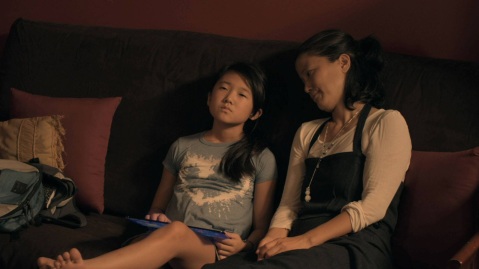 In a near-future North American metropolis, single mother Gwen Koh (Jacqueline Kim) is the face of the Centre for Advanced Health and Living, a company offering clients the ability to gain a more advantageous look by transferring their consciousness into a new body. When the company replaces her with a younger spokesperson, Gwen comes face-to-face with the discriminatory employment priorities of her society. Faced with escalating financial difficulty, Gwen must decide whether to take a risky but fiscally rewarding decision in order to secure her daughter Jules (Samantha Kim) a place at a prestigious prep school.
In a near-future North American metropolis, single mother Gwen Koh (Jacqueline Kim) is the face of the Centre for Advanced Health and Living, a company offering clients the ability to gain a more advantageous look by transferring their consciousness into a new body. When the company replaces her with a younger spokesperson, Gwen comes face-to-face with the discriminatory employment priorities of her society. Faced with escalating financial difficulty, Gwen must decide whether to take a risky but fiscally rewarding decision in order to secure her daughter Jules (Samantha Kim) a place at a prestigious prep school.
A chilling picture of an all-too-imaginable future, Phang’s ambitious but understated film is both a subtle exploration of delicate family dynamics and a scathing commentary on society, race and gender. Initial shots of Jules running and dancing, carefree, along the pavement with her friends provide a stark contrast to her hunched and tense posture as she tries to study while the crying of the woman in the apartment below drifts up through the floor. The city itself first appears idyllic- chrome and glass fronted, with dynamic sculptures, clean streets and a leafy park- but the spectre of unrest and inequality soon creeps in as Jules and her friends observe an explosion in a distant building (‘not again’ sighs Ginger), and Gwen finds a woman sleeping rough in the hedgerow outside her apartment block.
While the near-future setting touches on familiar science fiction mainstays (the rich getting richer, the poor getting poorer, and flying cars), the focus on how societal expectations of race and gender may change feels both well considered and realistic. After losing her job, Gwen finds it almost impossible to get re-employed. In a telling conversation with her ex-employer is told that making women redundant is “safer… than having desperate men on the streets.” Suddenly, the fact that it is women who Jules can hear crying in the adjacent apartments, and who Gwen sees sleeping on benches and in hedgerows, begins to make sense. Similarly, at first glance the world seems post-racial. Gwen, a child of Asian immigrant parents, has risen to a high and visible position at her company, and Jules’ friendship group is racially diverse. However, several interactions make it clear that race is still a factor in determining societal order. Gwen’s (white) bosses tell her they’re looking to replace her with someone whose look is ‘more universal,’ and the catalogue of inspirational transfer bodies available from the Centre for Advanced Health and Living are racially ambiguous but unfailingly light-skinned. Indeed, the advertisement that Gwen stars in for the company tacitly states that transference would be an attractive option for those who feel ‘held back’ by their race. As palpable as these themes are though, they never feel over-emphasized, and Gwen’s central motivations during the film: to find a good job, to secure her daughter’s future, and to re-establish broken family ties, transcend her situation as a member of more than one marginalised group even as they are influenced by it.
Director and co-writer Jennifer Phang brings a dreamy atmosphere to the proceedings, with the sinewy morphing corporate art of the buildings, vastness of the city and hologram phone calls creating a believable near-future. This, coupled with the film’s refusal to jump in with immediate exposition invites comparison to the work of Shane Carruth, particularly Upstream Colour, although Advantageous is less wilfully obtuse. The Kafkesque nature of Gwen’s odyssey and cast of mysterious supporting characters (the group of women Gwen dines with in an opulent setting have more than a little of Macbeth’s wyrd sisters about them) create a slow, gnawing tension which is as enticing as it is disturbing, and the dramatic twists scattered throughout achieve the mean feat of eliciting thrills without the need for big-budget bombast.
Verdict: 5/5
Bonus: Phang’s original short film upon which the movie is based can be viewed here. The full film is available everywhere on Netflix and on demand.
Image credit: facebook.com/Advantageous
Sicario Review
No Country For Americans
Released : September 8th 2015
Certificate : 15
Director : Denis Villeneuve
Cast : Emily Blunt, Benicio Del Toro, Josh Brolin, Daniel Kaluuya
Plot : After a career full of successful bust FBI agent Kate Macer (Blunt) and her main co-worker, less qualified Reggie (Kaluuya) come across a unique crime scene that is linked to the very top of the Mexican cartel. Kate is offered a shot to assist further deep across the Mexican border by laid back government officer Matt Graver (Brolin). Assisted by Alejandro (Del Toro) whose title is unknown to Kate, they lead an investigation into the head of Mexican cartel.
Denis Villeneuve returns to our screen with another dark thriller, with a cast to match his best work, Prisoners, a film which established him as a craftier of a unique brand of moral thriller, with more style than had been seen in the genre since The Girl with the Dragon Tattoo. The aspects of Prisoner which made it effective as a thriller was, a top cast working on top form, of course Villeneuve handy work and an unpredictable edge. All of which resulted in a thriller a cut above the rest. Here again Villeneuve returns with a cast to match Prisoners skill, but from outset appearing to be lacking in a storyline as initially new and chilling as that of Prisoners. The frequently explored topic of films for his new film is the war of drug trafficking, where Villeneuve has attempted to add uniqueness to the topic is by exploring the morality behind the fight, an area not new to cinema either, as well as a very personal character driven perspective of the fight. Neither of these quite as darkly unique as the topics tackled in Prisoners, but instead, Villeneuve has traded in for bullets, body count and scale while still in keeping with a murky winding road of a story of his previous work.
One of the main bases of this film are a characters, of which there are few, who are used as main point to draw the drama from the film, when it isn’t the intense action sequences. The film carries with it what could be considered by many to be a duel protagonist story, of a much high calibre than an average buddy cop film. But for the most part the film focuses around Emily Blunt’s Kate, a top of her class rule follower who not only has a burning desire for the end of the cartel, but also a strong moral compass. From just this information is can be easily predicted how she will react when she is thrown deep behind enemy lines in the pursuit of the cartel, the film teases this invertible drama brilliantly. The second main figure is that of Benicio Del Toro’s Alejandro, who is just a mysterious and unknown as the fight that Kate finds her self in. The enigma behind Alejandro might gain the most original teaser to a film it is well executed and adds to the film attempts to keep the audience in the same position as Kate, which is in the dark.
Despite the strong character and drama that steams from this, the sell out act for this film is Villeneuve work, as due to him the film stands as a model answer for how to build tension in a film. Sicario stands as a type of film that is a directorial joy to watch, due to the fact that, for the observant cinema goer, it can be easily noticed which this a film where every shot and camera movement is for a complex purpose. For those unaware of the finer detail, the effect will still be as riveting, but the meaningful crafted nature of the film demonstrates the care the thought put into the film on Villeneuve part. The specific effects themselves were fairly simplistic in nature, but proved for brilliantly effective results, for example sequence to break up the narrative of the film were mostly consistent of huge wide aerial moving shots of the desert as well as Mexico, coupled with the sound score that was progressively sinister despite being slow in tempo (reminiscent of films such as Nightcrawler). The effect on the audience was to unsettle them as well as demonstrate the mass scale of the issue faced by the team, conveying the hugely corrupted land. This being one of the most basic and noticeable ways in which Villeneuve parts the tension in the film as well as the meaning of the film, with camera shots holding no action codes or dialogue. This is not a radical concept to cinema, but to see it carried out beautifully and with precision never fails to be entertaining, as an example of well crafted cinema. Other proofs of Villeneuve understanding of the thriller genre was the effect and frequent effect of lighting codes, not only for effect by as well as meaning, the orchestration of the action sequences, and the way he made the audience feel much the same way as our main character Kate, which was a blend of scared, tense and confused.
As for a main characters presentation to us, Blunt nailed it. Her characters fear and anger as she realises the extent of the situations was delivered without flaw, the audience was able to easily relate to her reaction and share in her feeling due to Villeneuve audience positing, and this made Blunts performance all the more tasteful. This is not her best performance to date, as she was able to convey the characters overwhelmed sense as the story develops and realises her helplessness nature, and the way she translated the character strong will for a moral code despite the escalating wrongdoings and misconducts that she is exposed to provides a character performance its hard not to rally behind. The second side of this dual character film, which provide the mysterious edge and more complex character was Del Toro’s performance. He’s Mexican outcast was a stylish as he was enjoyable to watch, and Toro fitted the role perfectly, convincing the audience that this character was both tortured as well as experience with the cartel. Providing a great character contrast to Blunts role as both are placed in the firing line of the drug lords. Maybe the one good result of the 2010 The Wolfman was the ability for Del Toro and Blunt to get a feel of each other acting to provide for riveting, thou be it brief, dramatic character interaction within the film, most notable of which is the end act in which the acting reaches a peak as well as the meaning behind the film.
Overall Sicario is an outstanding thriller which carries with it the uniquely dark aurora that made Villeneuve so enjoyable in Prisoners. Blunt and Del Toro have redeemed their past collaboration with performance which are one of their best to date, and even despite Brolin slightly cartonish persona it manages to work with the film. But this being one of biggest minor flaws in a film that is otherwise well constructed and well delivered, with one the strongest climax’s to any film this year. A thriller that manages to operate on both a character based level as well as a wider meaning and maintains an effect that can be deemed, nail-biting.
Verdict : Sicario is the thriller to see in 2015, adding to Villeneuve history as he establishes himself as a modern master of the thriller genre, with another dark, moral and unpredictable tale which proves to be as thought-provoking as some of the best drug war films.
Verdict : 5/5
Quote : “You should move to a small town, somewhere the rule of law still exists. You will not survive here. You are not a wolf, and this is a land of wolves now.”
Review: The Falling
Released: 24th April
Certificate: 15
Director: Carol Morley
Screenwriter: Carol Morley
Cast: Maisie Williams, Florence Pugh, Maxine Peake, Greta Saatchi, Monica Dolan, Joe Cole
Set in a 1960s girls’ school, Carol Morley’s second feature film uses an outbreak of a mysterious fainting sickness to delve into issues of friendship, desire and self-examination. Teenage protagonist Lydia (Maisie Williams), is infatuated with her best friend Abbie (Florence Pugh), and terrified that their relationship will change in the wake of Abbie’s burgeoning sexuality and flirtation with Lydia’s older brother, Kenneth (Joe Cole). When Abbie is the first to fall victim to the epidemic of fainting, and Lydia finds herself succumbing, their group of friends must struggle to make sense of their symptoms in the face of impassive staff and a sceptical medical profession.
Strange and sensual, The Falling can be read in many different ways, and Morley skilfully maintains an ambiguity throughout. Florence Pugh’s otherworldly vocals in the film’s opening seconds feel almost like an incantation- a call to enter the dreamlike sphere of The Falling’s influence. This is continued as the ethereal piece played by the Alternative School Orchestra (Lydia and her core group of friends) is subsumed into Tracey Thorn’s score as the mysterious illness begins to manifest. The symptoms of the sickness itself- nausea, shaking, and almost balletic dyskinesias which give way to fainting- are excellently choreographed by Morley. If misdirected, the sight of mass swooning could easily look comical which, considering it happens time and time again in the film, would have rendered the whole thing a farce. Fortunately, the attacks are as disturbing as they are poetic, appearing equal parts agony and sweet surrender, particularly in one extraordinary sequence in which the whole school suffers a mass faint in assembly. This isn’t the only neat narrative trick, and despite the otherworldly nature of the story, Morley perfectly captures many of the fundamental constants of adolescence (and indeed life), from the frank intimacy of teenage friendships to the queasy humour that often pops up when facing horrific circumstances. The use of almost subliminally quick flashed images, both as part of larger montages and singularly in individual scenes, is powerfully evocative of how emotions and memories may flash unbidden to the surface.
How these memories are dealt with varies between cast members, whether it’s with teacher Miss Mantel (Greta Saatchi) and Miss Charron’s (Morfydd Clark) mutual support for one another, Miss Mantel’s restrained camaraderie with chainsmoking headmistress Miss Alvaro (Monica Dolan), Lydia and Abbie’s easy physicality or, more disturbingly, Abbie’s mother’s (Maxine Peake) complete withdrawal, and Abbie’s reflexive scorn. These myriad reactions highlight both the supportive and destructive nature of human relationships which, as the film progresses and tensions begin to mount, grow increasingly and oxymoronically intertwined. The cast rise admirably to the demands of the film’s complex characters, with Maisie Williams excelling in the lead role as the spiky Lydia, perfectly capturing her charisma and her vulnerability. Her performance is well complimented by Florence Pugh, and their raw dynamic anchors the first act. Maxine Peake brings depth to Lydia’s closed off and agoraphobic mother, Eileen.
Morley’s script is economical, making sure the dreamy intensity and at times ponderous ambiguity of the central occurrences don’t outstay their welcome. Although the pace perhaps slips at times in the final act as tension builds, the cathartic denouement more than lives up to the promise of the first two thirds. In The Falling, Morley and co. present a rich, compelling and provocative tale which stays with the viewer long after the credits have rolled.
Verdict: 5/5
Image credit: thefallingfilm.tumblr.com
Review: Appropriate Behaviour
Released: 6th March
Certificate: 15
Director: Desiree Akhavan
Screenwriter: Desiree Akhavan
Cast: Desiree Akhavan, Rebecca Henderson, Halley Feiffer, Scott Adsit
At a time where the cinematic and televisual landscape seems teeming with stories focusing on young bohemian New Yorkers, it can be difficult to stand out from the crowd. However, writer, director and star Desiree Akhavan’s hilarious, wry and surprisingly sweet tale of a bisexual brooklynite (Shirin, played by Akhavan) attempting to recover from an explosive break-up with her first girlfriend, Maxine (Rebecca Henderson), is a true gem.
Told in jumbled flashback interleaved with current events in chronological order, Appropriate Behaviour uses a series of vignettes to build up an impressively comprehensive picture of Maxine and Shirin’s courtship and break up, and Shirin’s attempts to reset her life in the aftermath. The use of cues in the present to trigger flashbacks, while a much used device in cinema, is done with enough subtlety that the segues seem natural, and lends the film a cohesion in that it allows the audience to truly get inside Shirin’s head and become part of the action.
A piece like this can fly or fail on the success of its comedic beats, and thankfully Appropriate Behaviour triumphs in this respect. Eschewing mumblecore improvisation for a more deliberately engineered approach pays off in spades, as the carefully constructed turns of phrase have both a verisimilitude and a razor-sharp focus. In one scene, Shirin’s boss Ken (Scott Adsit), upon discovering her Iranian heritage, says ‘I was just reading this article in Vice about the underground hip-hop scene in Tehran… are you part of that?’ to which Shirin replies, ‘no… when I go [to Iran] I mostly watch Disney videos with my grandmother while she untangles jewellery.’ This deadpan delivery is a particular talent of Akhavan’s, and watching the emotions play about her face as Shirin reacts to the situations around her is an absolute joy. Special mention must also go to Halley Feiffer as Shirin’s best friend Crystal, who shines in the film’s more comically absurd moments, particularly one very funny sequence in which they encounter an unexpectedly intense lingerie shop assistant (Kelly McAndrew). Unsurprisingly considering the subject matter, the comedy is occasionally near the knuckle, but despite a few cheap shots the humour stays on the wry side of arch and never feels deliberately mean-spirited.
Although the comedy is great, there’s also a vein of pathos running throughout which adds depth to the piece. Shirin struggles to reconcile her queer identity with her interpretation of the Persian culture to which she belongs, and fears coming out to her parents. The strain this places upon her relationship with Maxine, and indeed with her family itself, adds a substantial undertone which grounds the more whimsical aspects of the film, bringing it a greater emotional impact than it might otherwise have had. The close camerawork underscores the dramatic moments, again placing the viewer within the scene to allow them to experience the way in which the characters react to one another. The subtle performances from the cast mean we can see every murmured sweet nothing or loaded barb land upon its recipient, bringing an almost theatrical sense of presence (both in the physical and temporal sense) to the proceedings.
Bittersweet, knowingly strange and frequently hilarious, Appropriate Behaviour is an accomplished first feature, balancing wry and bawdy humour with a nuanced portrayal of bisexuality, love and heartbreak.
Verdict: 5/5
Image credit: appropriatebehaviourmovie.com
Recent Posts
Archives
- September 2017
- February 2017
- January 2017
- November 2016
- October 2016
- September 2016
- June 2016
- April 2016
- March 2016
- February 2016
- January 2016
- December 2015
- November 2015
- October 2015
- September 2015
- August 2015
- July 2015
- June 2015
- May 2015
- April 2015
- March 2015
- February 2015
- January 2015
- December 2014
- November 2014
- October 2014
- September 2014
- August 2014
- July 2014
- June 2014
- May 2014
- April 2014
- March 2014
- February 2014
- January 2014
- December 2013
- November 2013
- October 2013
Categories
- 1961
- 1982
- 1985
- 2010
- 2011
- 2012
- 2013
- 2014
- 2015
- 2016
- 2017
- 2D
- 3D
- Cinema
- Classic Reviews
- Collections
- DVD
- films
- Genre: action
- Genre: animation
- Genre: biopic
- Genre: comedy
- Genre: drama
- Genre: fantasy
- Genre: horror
- Genre: LGBTQ
- Genre: musical
- Genre: period drama
- Genre: sci-fi
- Genre: superheroes
- Genre: thriller
- Genre: western
- Netflix
- Preview Article
- Rating: 1/5
- Rating: 2/5
- Rating: 3/5
- Rating: 4/5
- Rating: 5/5
- Reviewed by: AES
- Reviewed by: SO
- Reviews
- Top 5 List
- Uncategorized
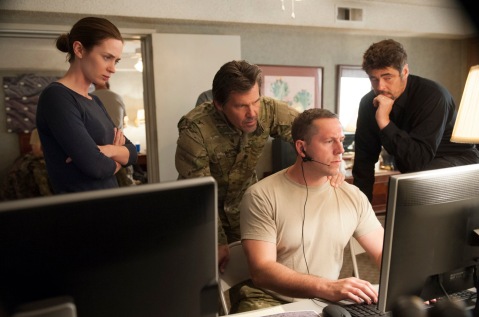
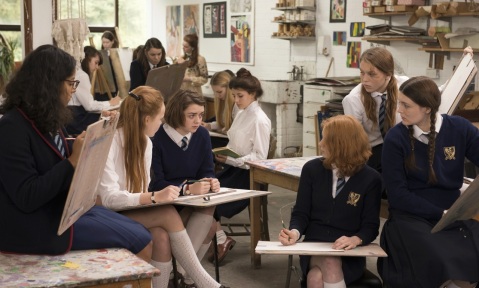
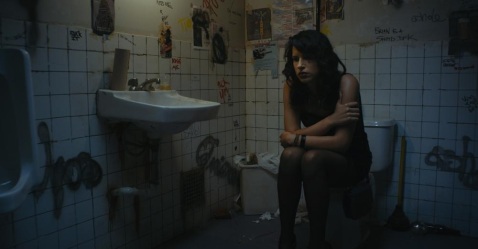
Recent Comments